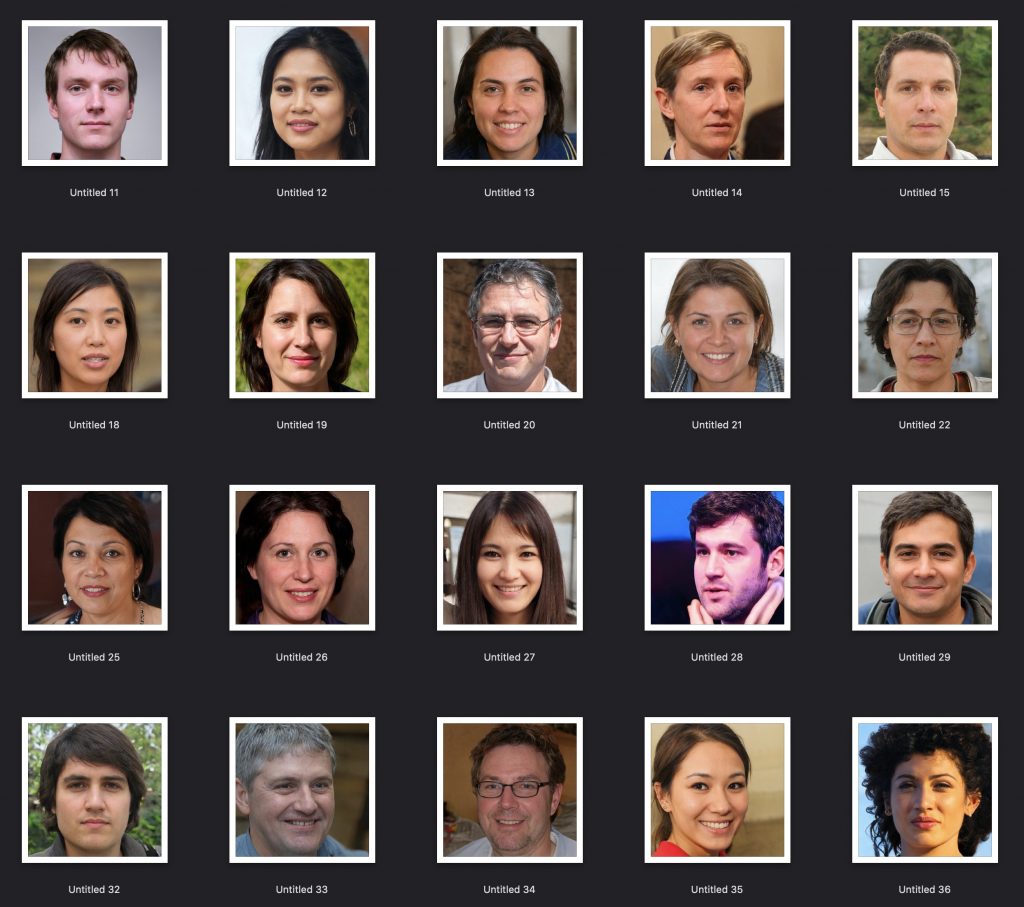AI and Character Design
One thing I have to do ASAP for my novel writing project is to figure out some character and plot ideas. I don’t already have a story in mind, and I haven’t figured out any characters. I haven’t even picked a genre, so I’m really starting from scratch here. I’d love to have at least a basic sketch of what kind of story I’m going to write by November 1st when NaNoWriMo officially starts.
I can lean on past role-playing experience to help with some details of character design, but I also prefer to trust in the flow of inspiration and see where that leads.
One idea that randomly popped into my mind a few days ago was to leverage AI for some character design creative inspiration. I thought it would be cool to generate some random faces with ThisPersonDoesNotExist.com as a creative tool. Since humans are such visual creatives, myself included, why not start with figuring out a character’s appearance first?
While I could start with abstract qualities or other character traits, there’s something about starting with faces that appeals to me. Imagine if you assembled a gallery of pics of all of your main characters. That alone feels like progress.
Yesterday I used that site to generate lots of random faces, and I saved about 100 of them. Some of the images are a bit deformed, but most look very realistic.
Now and then I’ll see a face that makes me curious. Who is this person? What is their backstory? Might this become an interesting character to explore in my novel?
Here are some samples from the collection I saved. I haven’t designed characters based on any of these. Right now I’m just assembling a collection for brainstorming purposes.

When I find an image that captivates me in some small way, I can daydream about the fictional person and see if it leads somewhere enticing. I can invite my mind to suggest details from their backstory.
That woman looks like she works for a tech company.
That guy looks like a little sinister.
That little girl looks wise beyond her years.
This person is probably comfortable on a stage.
Scrivener is popular writing software that I’ve been using for years, especially for designing courses, so I’m using it using it for my novel project as well. I just started that project with the built-in Novel template. In Scrivener it’s easy to add images to character sheets and even to display the cast of characters visually. So when I find an image I want to use for character inspiration, I can drag and drop that image into my novel doc and then design a character around it. I like the idea of being able to display my characters visually. That makes them feel more real to me, like it’s a real group of people inviting me to tell their stories.
With AI-generated images, the output is pretty random, so I may have to generate a lot of images to find ones I like. But it’s easy enough to open five or more browser tabs and just keep refreshing till something interesting comes up.
Since these images aren’t real people, they don’t carry the baggage of previous associations, so I feel free to construct their identities from scratch. If I used pictures of actual actors to remind me of my characters, their pics might bias my writing to align with other roles those actors have already played.
I like that this approach encourages diversity in my character set too. The AI generates images of different ages, races, and genders, including some faces that look androgynous.
These images may also help me consider details that I might have otherwise overlooked, like whether a character wears glasses, has facial hair, or likes baseball caps. I still have to use my imagination to fully design each character, but starting with a photo seems like a nice way to begin. From the face I may figure out the person’s name and a few other traits, and that gets me into their story.
When I would lead friends through role-playing adventures many years ago, I enjoyed designing interesting characters with goals that would conflict with the players’ goals. Some wild and fascinating stories emerged from this collision of goals. I think a similar approach could work for writing a novel. Design a variety of interesting characters who have conflicting goals and interests, let them collide, and see what type of story emerges from that.
I see this AI-based approach as one tool that I can use to the extent I find it helpful, but I don’t have to use it for every character. It’s not a substitute for other design tools and methods, just a supplement. I think it has promise though. Maybe it’s a bit geeky, but it’s getting me into thinking about character design.
This simple idea makes me wonder what other ways I could leverage some AI assistance for extra creative inspiration.
Someday in the future, I imagine making a bowl of popcorn and saying to an AI: Generate a two-hour movie based on my novel, and play it when ready. And then the next day: Now generate the sequel that I haven’t written yet.
You do realize that it’s only a matter of time before that’s a real thing, right?




